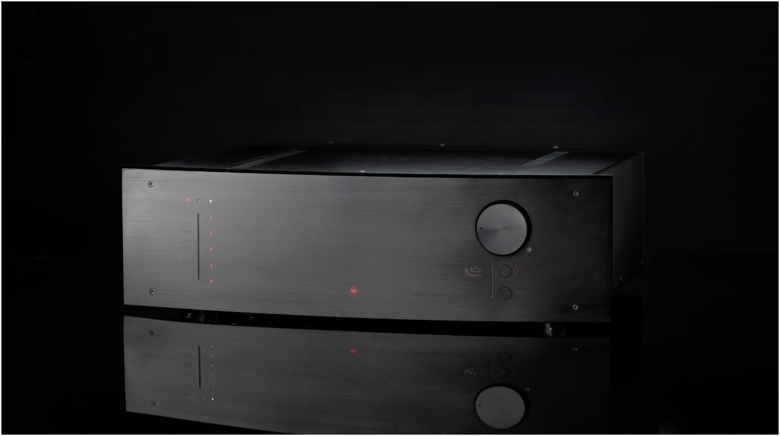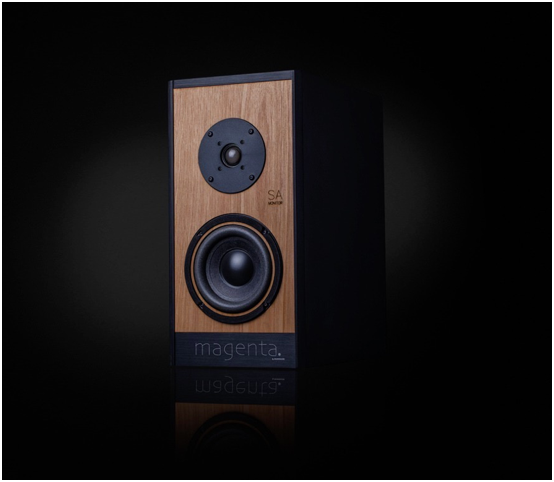
The Margules Magenta Studio Monitor Speakers and the Margules Magenta ACRH-1.2 Hybrid Integrated Amplifier, both designed and manufactured by Margules Audio, represent nearly a century of audio engineering heritage. The first Margules family audio electronics company was founded back in 1927. Continuing in his family’s footsteps, Julian Margules established Margules as a high-performance audio brand in 1985, and he currently serves as its president and chief audio designer.
Today, the Magenta line is the company’s entry-level range of products. They deliver the signature Margules sound at an affordable price point. For this review, I listened closely to the Magenta Studio Monitors combined with the ACRH-1.2 hybrid integrated amplifier and experienced what almost 100 years of audio design sounds like.
Margules Magenta Studio Monitors
The Margules Magenta Studio Monitors are two-way bookshelf speakers that feature custom drivers, a 5.25-inch long-throw carbon fiber paper cone woofer, and a 1-inch soft-dome tweeter. They use Valchromat, a proprietary engineered wood product with anti-resonant acoustic properties for the enclosure. The rear-ported cabinet has a laser-cut solid Caribbean walnut front panel. In order to produce a phase-coherent and time-aligned speaker, the design of the first-order crossover received special attention and care.
Taking a look inside the speaker from the rear port reveals internal bracing and a generous amount of strategically placed acoustic foam. Also, the internal OFCC wiring from Atlas Cables is partially visible. I noticed that traditional foam is used for the woofer’s surrounds. Why not the typical butyl rubber? Company representatives say they specifically selected the woofer material to provide increased excursion and low-end frequency response. For a full list of the speaker’s specifications, please click here.
Margules Magenta ACRH-1.2 Hybrid Integrated Amplifier

For my review, I used the Magenta ACRH-1.2 Hybrid Integrated Amplifier to power the Magenta Studio Monitors. It combines a 12au7-based tube preamp section along with a 100wpc solid-state transistor amplifier. The amplifier’s output stage is biased with a proprietary circuit that optimizes the operating point of the high-output transistors. This reduces the high level of heat produced in other types of Class A designs, while at the same time avoiding the distortion of Class B designs.
The ACRH-1.2 design incorporates short signal paths along with a direct-coupled output, solidifying it as a purist audiophile product. It includes four line-level inputs and a built-in phono preamp. Despite the tube complement and high output power, it produces very little heat even after hours of playback at elevated volume levels. You can read additional information and specifications here.
Sound Quality and Performance
I immediately noticed the airy and delicate treble reproduction. The tweeter did not bring any attention to itself, and it was perfectly integrated with the woofer. This made all of the high frequencies flow naturally and resulted in a fatigue-free listening experience. I could easily hear the care that went into the crossover design.
The second thing that jumped out at me was the large and seamless soundstage. The sound wasn’t at all localized to the speakers themselves. They performed an unbelievable disappearing act with any genre of music I played through them. My reference PMC twenty.22 monitors (at twice the price) can’t even pull off the imaging tricks of the Magenta Studio Monitors. When I turned up the volume, there was an unrestricted and effortless flow to the sound. This characteristic, along with a three-dimensional midrange, drew me into the music and demanded my attention.
Margules Sound Profile
The Margules engineers specifically selected the material used in the speakers’ woofers to bolster the low-end frequency response. This ensures that the overall sound profile of the Magenta combination is bass-forward with a lush and palpable midrange. Although I typically prefer a more neutral and balanced speaker, when the bass is this clean and fast it’s truly a pleasure to experience. Even as it descends to 35hz, the linear bass response went so deep that I never thought about needing a subwoofer. I couldn’t believe how much visceral bass these 5.25-inch woofers produced. It was more than enough to pressurize my listening room with sound.
The firm and effortless bass from the Magenta Studio Monitors made for a rich and rewarding listening experience. There was a pleasant weight and authority to the sound, which gives a satisfying “meat on the bones” sensation without sounding syrupy or slow.
The Margules Experience
The Margules equipment succeeds in getting out of the way of the music. Nothing tells your ears that you’re listening to compact monitors powered by a hybrid integrated amplifier. It’s a purely musical experience that makes you forget about the gear.
I’ve heard the Margules house sound from the company’s flagship components at past audio shows. This same sound is also present in these lower-priced Magenta products. I love that Margules successfully brought their signature listening experience to this more affordable Magenta line. This opens the door for more people to experience the unmistakable sound quality Margules engineers into their products.
The Magenta pairing is perfectly suited for modernly-mastered music that can tend to sound slightly hot or bright up top. It’s exquisitely balanced at higher volume levels, where all of the elements of the sound come into their own and provide a great sense of seamlessness throughout the frequency range. It’s a sound you can listen to all day long with no fatigue.
A Few Caveats
While I was more than impressed with the overall performance and sound, there are a few elements of the ACRH-1.2 that I feel could be improved upon.
The built-in phono preamp did not have the same level of dynamics and richness that I heard with digital sources. There was nothing glaringly wrong with it, but its performance didn’t match the heights of the ACRH-1.2’s amplifier section.
Secondly, the remote-controlled volume adjustment is especially touchy. The quickest possible button press still results in an unexpectedly fast increase or decrease in volume. This made it hard for me to fine-tune the volume level to exactly where I wanted it. Ideally, the motorized potentiometer should be slowed down so the volume level can be increased and decreased at a more graceful rate.
Conclusion and Value
I want more people to know about Margules. I know I’m not the only one who seems to be immediately captivated and enthralled by the sound quality and performance of this company’s equipment. The more people who experience the Margules signature house sound the better, even if they ultimately decide not to pursue it. At least they will have heard the commendable performance of this $5,000 combination.
It’s stunning that this level of musicality and listener engagement is possible at this price. With the Magenta monitors and the ACRH-1.2 hybrid integrated amplifier, it’s now possible to get the signature Margules experience at the lowest prices ever offered.


